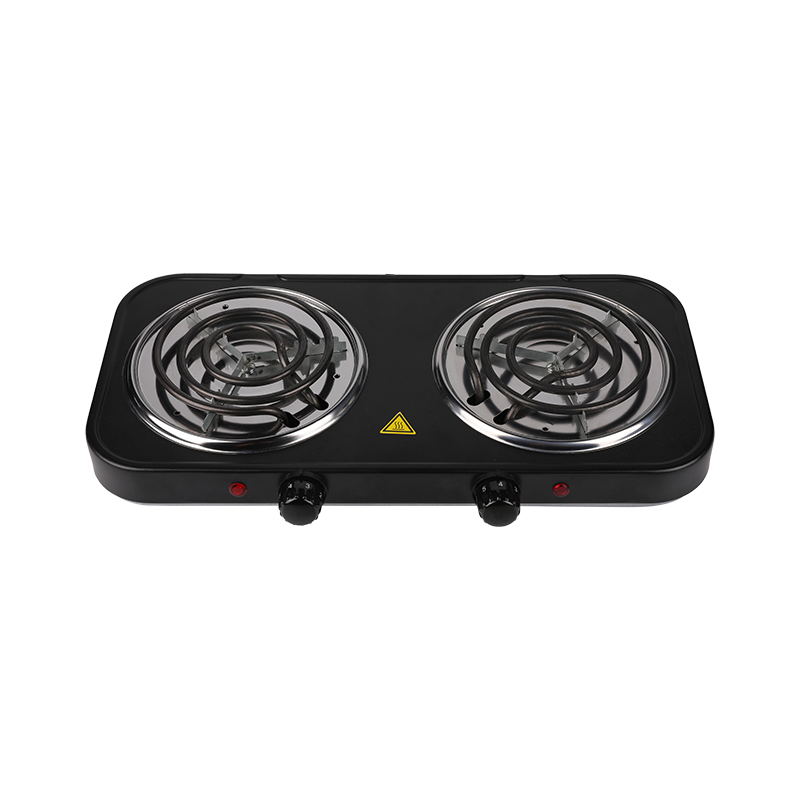Safe healthy environmentally friendly single hot plate
Cat:Single Hot Plate
In the modern kitchen, safety, health, and environmental consciousness are of importance. That's why we're proud to introduce the Safe, Healthy, Envir...
See DetailsIn recent years, spiral heating hot plate technology has made significant progress, and current designs place greater emphasis on safety, efficiency, and user feedback. Through addressing these issues, we have improved and resolved common safety hazards associated with traditional coil-type heating surfaces. Through improved insulation, better heat control, and protective housing materials, the modern spiral hot plate supports safer cooking in homes, dormitories, and shared kitchens.

In the past, electric stoves with coil or spiral elements have had safety issues such as exposed hot elements, uneven or unexpected surface temperatures, slow cooling, and unexpected debris accumulation that could block airflow or cause the stove to overheat. These factors can all lead to burnt cookware, accidental injury from contact with the hot surfaces of cookware, or premature damage to equipment.
The newer generation of spiral heating hot plate devices delivers improved user protection through multiple mechanisms. One of the most important improvements is the integration of a thermal sensor, which can be used to monitor the temperature of the burner surface and internal components. When the device detects a temperature exceeding safe thresholds, it either reduces power or shuts down entirely. The coil element is often enclosed beneath a metal or ceramic plate cover, meaning that direct contact with the hot coil is less likely. In addition, insulation for internal wiring and housing materials has been upgraded to keep external surfaces cooler and reduce the risk of scorching or contact burns.
Modern spiral heating hot plates incorporate enhanced insulation to reduce the amount of heat that transfers from the internal components to the outer housing. This means the body and control knobs stay cooler during use, reducing the risk of accidental burns. Materials such as heat-resistant plastics and reinforced metal casings now serve dual purposes: improving structural stability and protecting users from unnecessary heat exposure.
In addition, non-slip feet and stable support frames keep the unit securely positioned on countertops, helping prevent accidental tipping or shifting while in use. These small details contribute to a safer cooking environment, especially in compact or shared spaces.
Safety protocols governing electric heating appliances include requirements for surface-temperature control, electrical insulation, residual heat indication, and structural stability under repeated cycles. Spiral heating hot plates entering the market now more consistently reflect these safety specifications. For users, that means an assurance that the unit is designed to meet recognized durability and operational standards.
Even with improved safety design, safe operation remains dependent on correct usage. Users should ensure that cookware is placed securely and has a flat bottom to promote stable contact and reduce heat concentration in a single zone. Spills should be cleaned promptly, especially acidic or sugary substances, to prevent damage to the plate surface or coil mechanism. After use, allow sufficient time for cooldown before handling the surface or storing the unit. Additionally, wires and connectors should be examined periodically for signs of heat stress, discoloration, or damage.
Residue buildup beneath the coil cover or within the drip tray may impede ventilation and increase internal temperatures. Users should make a cleaning schedule, remove trays or covers where provided, and ensure that no flammable or heat-sensitive items are placed close to the unit. If the burn-surface becomes uneven or if the housing becomes unusually warm during use, set the unit aside for inspection rather than continue operation under potentially unsafe conditions.
Regular safety maintenance helps ensure the safety and efficiency of the spiral heating plate. Over time, food grease and residue can accumulate under the removable cover or drip tray. If not cleaned regularly, this can obstruct the ventilation of the spiral heating plate, leading to increased internal temperature. Establishing a cleaning schedule not only ensures ventilation but also allows the equipment to operate as expected.
You should also pay attention to any changes in its performance. If the surface temperature is uneven, an unusual odor appears, or the casing temperature is higher than usual, immediately unplug the power cord and inspect the equipment. Only continue to use after confirming there are no problems. Continuing to use the equipment under suspicious conditions may increase the risk of malfunction.